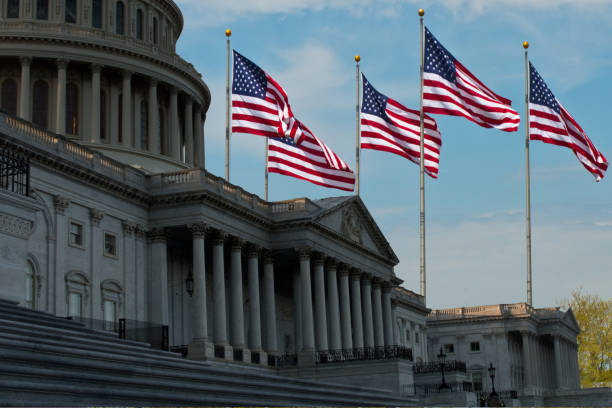Pound Sterling slides further against US Dollar despite dovish Fed remarks

- The Pound Sterling refreshes a two-month low to near 1.3280 against the US Dollar.
- Federal Reserve officials have delivered dovish remarks on the monetary policy outlook.
- BoE policymaker Catherine Mann supports higher interest rates for a longer period.
The Pound Sterling (GBP) holds onto losses near its two-month low around 1.3280 against the US Dollar (USD) during the European trading session on Friday. The GBP/USD pair trades vulnerably as the US Dollar exhibits strength, with an increase in its safe-haven demand following political developments in Japan and France.
At the press time, the US Dollar Index (DXY), which tracks the Greenback’s value against six major currencies, clings to gains near a fresh two-month high of 99.56 posted on Thursday.
However, financial market participants remain cautious over the US Dollar’s outlook in the wake of firm expectations that the Federal Reserve (Fed) will cut interest rates again in both monetary policy meetings remaining this year.
According to the CME FedWatch tool, traders see an 81.5% chance that the Fed will cut interest rates by 50 basis points (bps) to 3.50%-3.75% by the year-end.
On Thursday, Federal Open Market Committee (FOMC) members, New York Fed President John Williams and San Francisco Fed President Mary Daly, cited that the current monetary policy stance is restrictive and the Fed needs to cut rates further this year amid deteriorating labor market conditions. On the contrary, Fed Governor Michael Barr expressed caution about further rate cuts as inflation is unlikely to return to the central bank’s target of 2% in the next two years.
In Friday’s session, investors will focus on the preliminary Michigan Consumer Sentiment Index and Consumer Inflation Expectations data for October, which will be published at 14:00 GMT.
Daily digest market movers: Pound Sterling trades lower against its major currency peers
- The Pound Sterling continues to underperform its major currency peers on Friday as financial market participants expect the United Kingdom (UK) Chancellor of the Exchequer Rachel Reeves to raise taxes in the Autumn Statement again to address its ballooning fiscal debt, which is scheduled for late November.
- Investors worry that the announcement of fresh taxes, either on individuals’ wealth or a further increase in employers’ contribution to social security schemes, or a combination of both, would dampen the overall sentiment of households.
- The increase in employers’ contribution to National Insurance (NI) to 15% from 13.8% announced in the last budget resulted in a sharp slowdown in the labour demand. Business owners reduced their labour force to offset the impact of increased employment costs.
- An increase in tax burden on households or employers by the UK Labour government will raise questions over its credibility, after promising voters before the election not to raise taxes.
- In a speech on Thusday, Bank of England (BoE) Monetary Policy Committee (MPC) member Catherine Mann argued in favour of maintaining a restrictive monetary policy stance for longer, citing that the central bank still needs to address upside inflation risks. "The evidence from consumer behaviour is that we are not there yet,” Mann said.
- Going forward, investors will focus on the UK employment data for the three months ending in August, which will be released on Tuesday.
Technical Analysis: Pound Sterling falls further to near 1.3300
-1760080992246-1760080992257.png)
The Pound Sterling extends its downside to near 1.3300 against the US Dollar on Friday, the lowest level seen in a month. The overall trend of the GBP/USD pair has become uncertain as it drops to near the 200-day Exponential Moving Average (EMA), which trades around 1.3280.
The 14-day Relative Strength Index (RSI) slides below 40.00, suggesting the onset of a fresh bearish momentum.
Looking down, the August 1 low of 1.3140 will act as a key support zone. On the upside, the psychological level of 1.3500 will act as a key barrier.
Pound Sterling FAQs
The Pound Sterling (GBP) is the oldest currency in the world (886 AD) and the official currency of the United Kingdom. It is the fourth most traded unit for foreign exchange (FX) in the world, accounting for 12% of all transactions, averaging $630 billion a day, according to 2022 data. Its key trading pairs are GBP/USD, also known as ‘Cable’, which accounts for 11% of FX, GBP/JPY, or the ‘Dragon’ as it is known by traders (3%), and EUR/GBP (2%). The Pound Sterling is issued by the Bank of England (BoE).
The single most important factor influencing the value of the Pound Sterling is monetary policy decided by the Bank of England. The BoE bases its decisions on whether it has achieved its primary goal of “price stability” – a steady inflation rate of around 2%. Its primary tool for achieving this is the adjustment of interest rates. When inflation is too high, the BoE will try to rein it in by raising interest rates, making it more expensive for people and businesses to access credit. This is generally positive for GBP, as higher interest rates make the UK a more attractive place for global investors to park their money. When inflation falls too low it is a sign economic growth is slowing. In this scenario, the BoE will consider lowering interest rates to cheapen credit so businesses will borrow more to invest in growth-generating projects.
Data releases gauge the health of the economy and can impact the value of the Pound Sterling. Indicators such as GDP, Manufacturing and Services PMIs, and employment can all influence the direction of the GBP. A strong economy is good for Sterling. Not only does it attract more foreign investment but it may encourage the BoE to put up interest rates, which will directly strengthen GBP. Otherwise, if economic data is weak, the Pound Sterling is likely to fall.
Another significant data release for the Pound Sterling is the Trade Balance. This indicator measures the difference between what a country earns from its exports and what it spends on imports over a given period. If a country produces highly sought-after exports, its currency will benefit purely from the extra demand created from foreign buyers seeking to purchase these goods. Therefore, a positive net Trade Balance strengthens a currency and vice versa for a negative balance.








